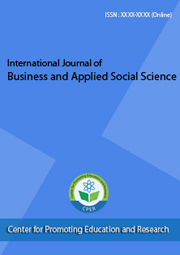Journal Menu
current
VOLUME; 6, ISSUE; 3, MARCH 2020
Table of Contents
Articles
Author(s): Prof. Asoc. Dr. Shurki MAXHUNI; Prof.Asiss.Dr.Nerimane BAJRAKTARI
Full Text
1332 1203
1332 1203
Abstract:
The dairy industry seems to have convinced the food industry that whey is a miracle product. The list of supposed benefits it gives to food is as long as your arm. Some of the benefits may be real.Whey is the liquid remaining after milk has been curdled and strained. It is a by-product of the manufacture of cheese or casein and has several commercial uses. To produce cheese, rennet or an edible acid is added to heated milk. This makes the milk coagulate or curdle, separating the milk solids (curds) from the liquid whey. Sweet whey is the byproduct of rennet-coagulated cheese and acid whey (also called sour whey) is the byproduct of acid-coagulated cheese. Sweet whey has a pH greater than or equal to 5.6, acid whey has a pH less than or equal to 5.1.
Whey is also a great way to add sweetness to a product without having to list sugar as an ingredient as whey contains up to 75% lactose. And it sounds healthy.
This study is done to research the examinations for the production of mozzarella cheese from Cow’s milk, after research and analyses of a physical-chemical peculiar feature of whey from coagulum. We have followed the processes from the drying of whey from the coagulum analyzer's physical-chemical peculiar feature. We carried out three experiments. For every experiment, we took three patterns and analyzed the physical-chemical. The calculation was appraised statistically. This paper deals with the research of% of whey fat during the process of milk production from standardized to non-standardized milk. Where% of whey fat should be an economic indicator for standardizing milk for dairy production.






